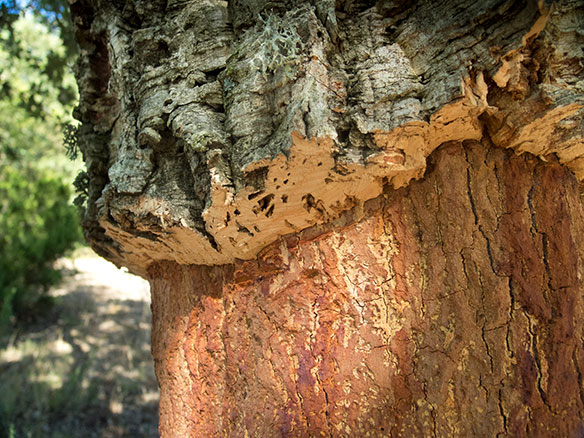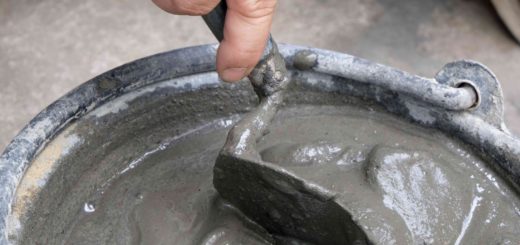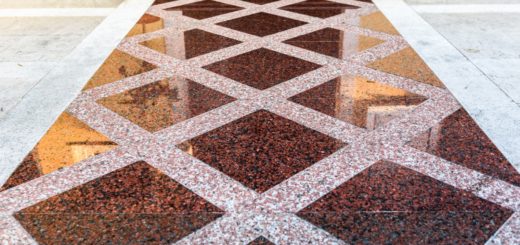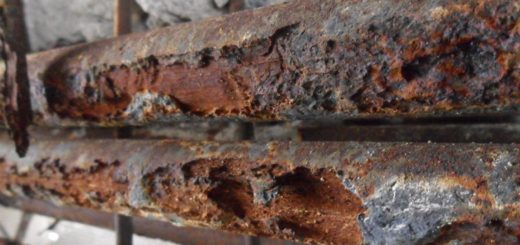Benefits of Cork Flooring: Sustainable Choice
Cork flooring is gaining popularity as a sustainable and eco-friendly flooring option. In this comprehensive article, we will delve deeper into the many advantages of cork flooring, from its natural origins to its durability, style options, maintenance, and more. If you’re considering a flooring upgrade, read on to discover why cork might be the perfect choice for your home.
What Is Cork Flooring?
Cork flooring is made from the bark of cork oak trees, primarily found in Mediterranean regions. The bark is carefully harvested without harming the tree, making cork an environmentally friendly material. Here’s why cork flooring is worth considering:
Why Choose Cork Flooring?
1. Sustainability
Cork is a renewable resource, and the harvesting process promotes tree health. Unlike traditional hardwood flooring, cork doesn’t require the tree to be cut down. This eco-conscious choice helps preserve forests and reduce our carbon footprint.
Cork oak trees have a unique ability to regenerate their bark, and this process actually improves their overall health. This means that the cork used for flooring is not only sustainable but contributes to the longevity of the trees themselves.
2. Comfort and Resilience
Cork flooring is naturally cushioned, providing a comfortable surface to walk on. Its inherent resilience makes it ideal for areas with heavy foot traffic, as it can bounce back from indentations and impacts.
Imagine stepping onto a cork floor after a long day at work. The softness underfoot can provide a sense of relief, reducing the strain on your legs and back. This makes cork flooring an excellent choice for spaces where you spend a lot of time standing, such as kitchens.
3. Thermal and Acoustic Insulation
Cork’s cellular structure traps air, creating a natural barrier against temperature fluctuations and noise. It helps maintain a comfortable indoor climate and minimizes sound transmission between floors.
In regions with extreme temperatures, cork flooring can help keep your home cozy in the winter and cool in the summer. Additionally, the acoustic properties of cork make it a fantastic choice for homes with active families or apartment dwellers concerned about noise disturbances.
4. Hypoallergenic
Cork is resistant to mold, mildew, and pests, making it an excellent choice for allergy sufferers. Its anti-microbial properties ensure a healthier indoor environment.
People with allergies often struggle to find flooring materials that won’t aggravate their symptoms. Cork’s natural resistance to common allergens makes it a standout choice for those looking to improve indoor air quality.
Image Source: Internet
Cork Flooring Styles
1. Natural Cork
Natural cork flooring showcases the raw beauty of cork bark. Its earthy tones and unique patterns add character to any room. This style is perfect for those who appreciate the beauty of natural materials.
Imagine the rustic charm of a cork floor that tells the story of cork oak trees. The swirls and patterns in the bark are like fingerprints, ensuring that no two cork floors are exactly alike.
2. Engineered Cork
Engineered cork combines a cork veneer with a high-density fiberboard core for added stability. It offers a wider range of finishes, including hardwood and tile looks, making it a versatile choice.
Engineered cork allows you to enjoy the benefits of cork while having the flexibility to match various interior design styles. Whether you prefer the warmth of wood or the sleekness of tiles, there’s an engineered cork option for you.
3. Floating Cork
Floating cork planks or tiles are easy to install and can be laid over existing flooring. This option is perfect for DIY enthusiasts looking for a hassle-free installation process.
Picture a weekend project where you transform your space with the ease of a puzzle. Floating cork floors are designed for simplicity, making them accessible to even the least experienced DIYers.
Maintenance and Care
Cork flooring is relatively low-maintenance, requiring regular sweeping and occasional damp mopping. It’s essential to avoid excessive moisture to prevent damage to the cork surface. Additionally, using furniture pads can prevent scratches.
Cork floors are known for their durability, but like any flooring material, they require some care to stay in top shape. Let’s explore some maintenance tips that will ensure your cork floor looks as good as new for years to come.
Cleaning Routine: Establish a regular cleaning routine that includes sweeping or vacuuming to remove dirt and debris. Use a damp mop with a pH-balanced cork floor cleaner to maintain its shine.
Avoiding Excess Moisture: While cork is water-resistant, it’s not waterproof. Avoid excessive moisture, especially in seams between tiles or planks, to prevent warping or damage.
Furniture Pads: Place furniture pads under the legs of chairs, tables, and other heavy items to prevent scratches and dents on the cork surface.
Regular Inspections: Periodically inspect your cork flooring for any signs of wear or damage. Promptly address any issues to prevent further deterioration.
Refinishing: Cork flooring can be refinished if it starts to show signs of wear. Follow manufacturer guidelines for refinishing, and consider hiring a professional for this task.
Cork Flooring and Interior Design
Cork flooring isn’t just about sustainability and durability; it’s also a design statement. Its unique textures and patterns can complement a wide range of interior styles. Let’s explore how cork can enhance your home’s aesthetics.
Natural Aesthetics
Natural cork flooring brings the beauty of the outdoors inside. Its earthy tones and organic patterns create a warm and inviting atmosphere. This makes it an excellent choice for homes with a rustic or natural design theme.
Modern Elegance
If your home leans towards a more modern or minimalist design, engineered cork flooring can provide a sleek and contemporary look. You can choose from a variety of finishes that mimic the appearance of hardwood or stone, adding a touch of elegance to your space.
Eclectic Interiors
Cork’s versatility shines in eclectic interiors. Its unique texture and patterns can be combined with various design elements, allowing you to create a one-of-a-kind space that reflects your personality and style.
Installation Considerations
Installing cork flooring requires some planning and preparation. While floating cork floors are DIY-friendly, professional installation may be necessary for some styles. Let’s take a closer look at what you should consider when installing cork flooring.
- Subfloor Preparation
Before installing cork flooring, ensure that the subfloor is clean, level, and dry. Any imperfections or moisture issues can affect the performance and longevity of your cork floor.
- Acclimation
Cork is a natural material that can expand or contract with changes in humidity and temperature. Allow the cork planks or tiles to acclimate to your home’s environment for at least 48 hours before installation.
- Underlayment
A quality underlayment can enhance the comfort and insulation properties of your cork floor. It also helps with sound reduction. Choose an underlayment that is compatible with cork flooring.
- Professional Installation
While floating cork floors are designed for DIY installation, other cork flooring styles may require professional installation, especially if you have specific design requirements or subfloor issues.
Environmental Impact of Cork Flooring
Cork flooring is renowned for its sustainability, but let’s dive deeper into the environmental impact of choosing this material for your home.
Carbon Footprint Reduction
By opting for cork flooring, you are indirectly contributing to the reduction of your carbon footprint. The cork oak trees used for harvesting are not cut down but continue to absorb carbon dioxide, making cork a carbon-neutral material.
Energy Efficiency
Cork’s natural insulation properties can lead to energy savings in your home. The improved thermal performance can reduce the need for excessive heating in the winter and cooling in the summer, ultimately lowering your energy bills.
Eco-Friendly Harvesting
The process of harvesting cork is labor-intensive but eco-friendly. Skilled workers carefully strip the bark from cork oak trees, allowing them to continue growing and thriving. This sustainable practice contrasts sharply with the deforestation associated with some other flooring materials.
Recycling Potential
Even when a cork floor reaches the end of its life, it is still an environmentally responsible choice. Cork can be recycled and repurposed, reducing waste and further contributing to its eco-friendly reputation.
Frequently Asked Questions
1. Is cork flooring suitable for kitchens and bathrooms?
- Cork flooring is water-resistant but not waterproof. While it can handle occasional spills, it’s best to avoid installing it in areas with high moisture levels, such as bathrooms.
2. Can cork flooring be refinished, and how often should it be done?
- Yes, cork flooring can be refinished if it starts to show signs of wear. The frequency of refinishing depends on factors such as the thickness of the cork and the level of wear and tear. Follow the manufacturer’s recommendations.
3. Is cork flooring more expensive than hardwood flooring?
- Cork flooring prices can vary, but it is generally in the same price range as hardwood. Keep in mind that its eco-friendliness and unique qualities may justify the cost.
4. How long does cork flooring last?
- With proper care, cork flooring can last for several decades. It’s a durable option that can withstand the test of time.
5. Is cork flooring suitable for homes with pets?
- Cork flooring is pet-friendly due to its cushioning and scratch-resistant properties. However, it’s essential to keep your pet’s claws trimmed to prevent scratches and gouges.




